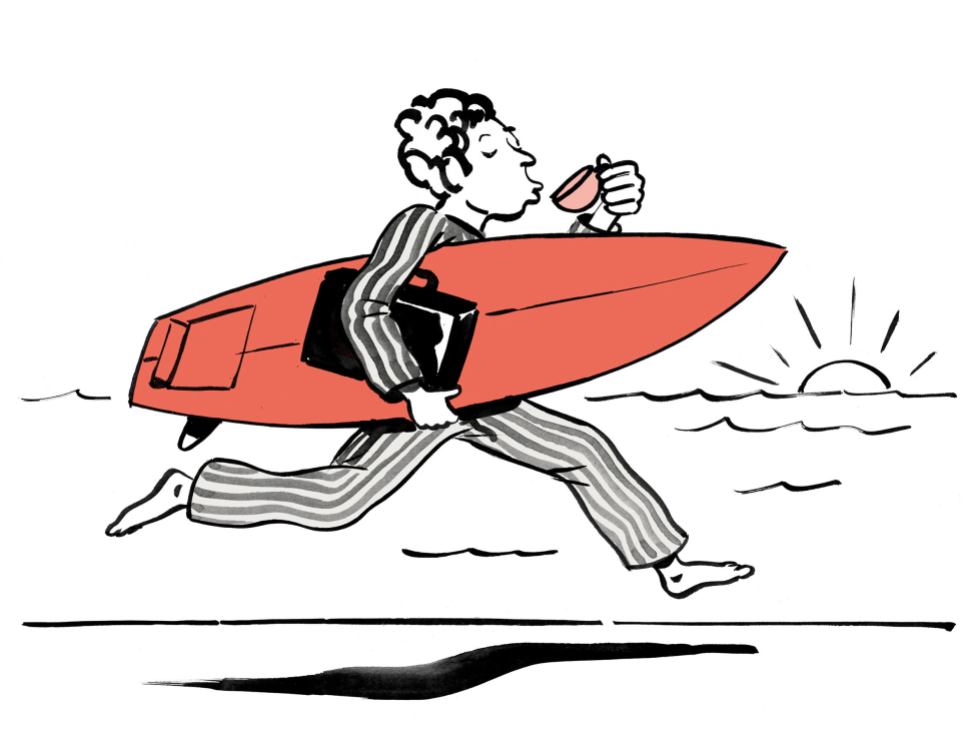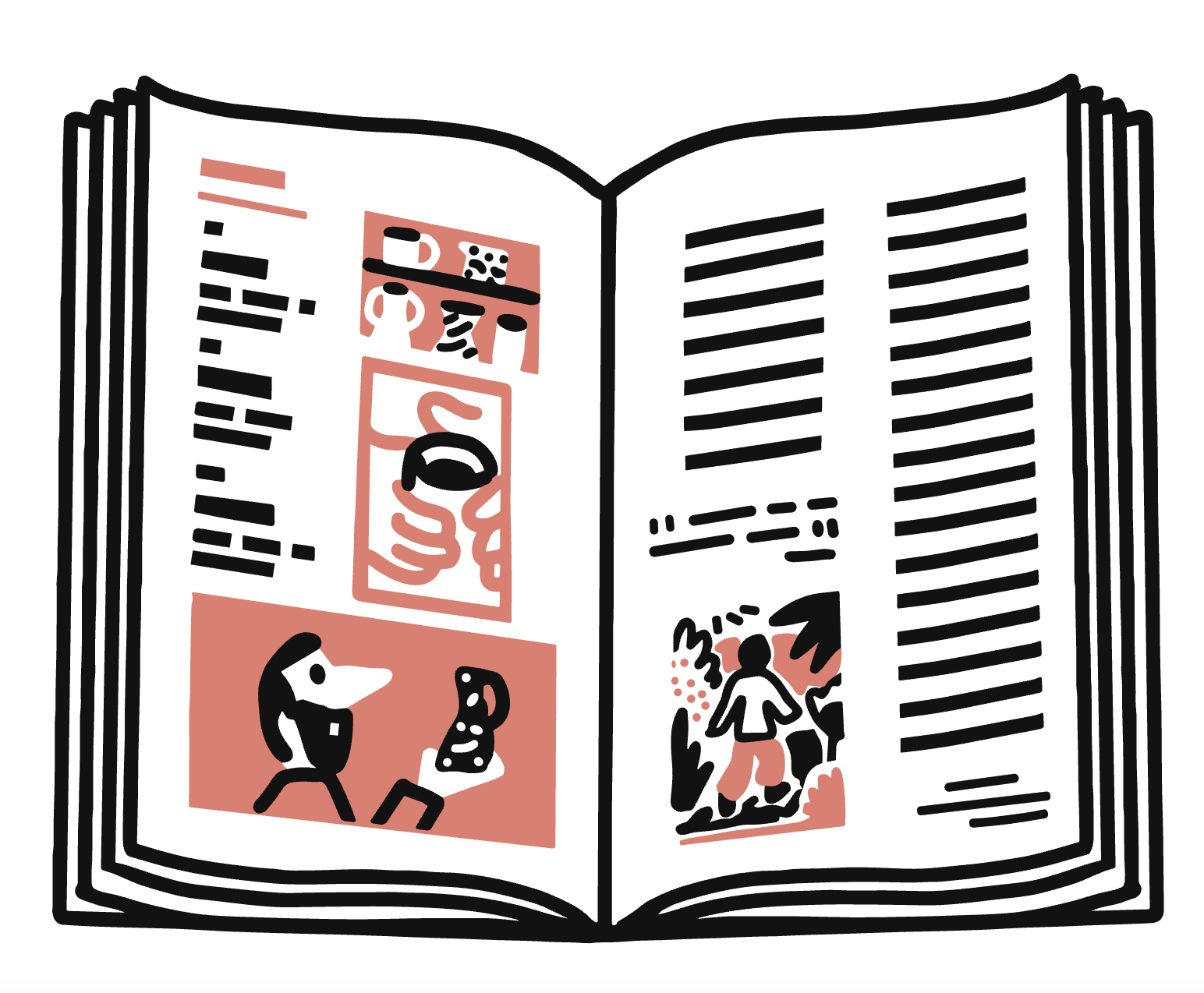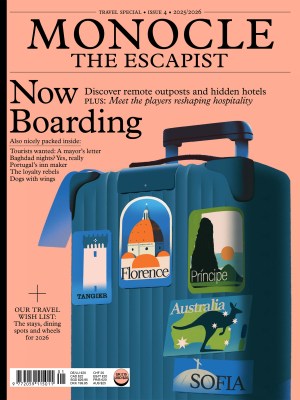The new morning economy: CEOs aren’t the only ones benefitting from crack-of-dawn starts
As health-conscious professionals embrace 05.00 starts, researchers discover a thriving pre-work economy worth billions. From packed beachside cafés to sunrise yoga classes, the morning rush is creating new opportunities for cities worldwide.
The past few years have seen a surge in wellness-seeking early risers jumping out of bed before the cock crows for pre-work runs and yoga classes. LinkedIn is awash with self-congratulatory posts about 04.00 starts, and the quest to be more productive has ushered in a wave of pre-dawn routines in C-suites around the world.
When Sydneysider Ivan Power – an investor, government adviser and morning person – noticed this trend earlier this year, he teamed up with Melbourne-based academic Dr Anna Edwards to launch a study of the “morning economy”. A self-proclaimed “data nerd”, Edwards has been studying the night-time economy since 2009, initially in her native UK and subsequently in her adopted home of Australia. With several research projects and reports underway, the expert already believes that the opportunities for businesses during the ungodly hours could be just as big as they are at the end of the day.
Monocle spoke to Power and Edwards about wake-up routines down under, Australia’s ownership of breakfast and city halls’ rising investment in the 24-hour economy.

Before we dive in, let’s have a quick temperature check. Who saw the sunrise this morning?
Anna Edwards: Not so much; I was out late last night. That’s the thing – sometimes we want to be out late and have a drink after work, and sometimes we want to get up early and enjoy the morning.
Ivan Power: I’m an early riser. Generally, I’m up at about 05.00 and I’m down at the beach by 05.30, either for a swim, a paddle, a surf or to go to the gym. I’m fortunate enough to live in Bronte, a Sydney suburb that’s home to one of the world’s great urban beaches.
What tipped you off that early-morning activity might be more than just a lifestyle trend, and something worth studying?
I: Since the coronavirus pandemic, I began to notice more people in the mornings while doing my laps. But one day, when I was sitting out in Bronte at 06.30, I noticed that there were no seats available at the seven cafes that line the strip. It dawned on me that this increase in business was an economic thing. I posted a few thoughts about the “morning economy” online, and Anna was one of the first people to reach out and express interest in the topic.
A: I was involved in the first-ever measurement of the night-time economy in the UK, so when I read Ivan’s morning economy piece, I saw a huge opportunity. The early-morning hours provide another time frame for us to utilise outside of the regular nine-to-five workday, which is really beneficial to society. One of the projects that I’m working on now is a global comparison of morning activity, which will be available later this year.
Why should mornings matter to city hall?
A: One of the main reasons that cities around the world are investing in their nightlife offerings is to enhance livability and attract talent and investment. But things are changing. People are drinking less alcohol and we’re seeing a shift in what the younger generation is looking for. It’s all about personal choice and providing opportunities for the sky larks, not just the night owls.
How does it compare to when you started work on the night-time economy?
A: When I first started measuring the night-time economy, nobody had heard of it. I remember talking to friends and they thought that it was all about alcohol, which is not true. It’s about making cities in the evening more vibrant and safer by offering a diverse range of activities for a broader audience of people. We need to apply the same kind of thinking to the morning economy. It’s an untapped part of the day, and from a livability perspective, there are opportunities all around the world for cities to embrace.
What data are you collecting?
A: Trading hours, credit card spending, foot-traffic data – things like that. At first glance, I’m seeing more activity in the warmer months, as you’d expect – but also that Wednesdays and Thursdays seem to be the days when we see the most movement. That could be because people tend to go to the office during the middle of the week.
Does the size of a morning economy depend on culture or climate?
A: Moving from the UK to Australia, I learned that it’s fair enough to invite people to a 07.00 park run. That’s not an anti-social thing to do here. Likewise, there are a lot of Asian countries where the early morning is the only time to be outdoors to avoid the heat. There’s a lot that we can learn based on climate and temperature.
I: Australia can get quite hot, and as a country, we’ve put a lot of thought into our breakfasts – they have to be done really well. In fact, we’ve even exported a little bit of that breakfast culture to the rest of the world.
It’s winter in Australia right now. Does it get lonely in the early hours?
I: It’s not lonely at all, and the number of active people stays fairly consistent. Sure, it’s not as busy in the depths of winter as it is in the height of summer. But there are still plenty of people taking the time to get out in the mornings – to look at the water, walk along the coastal path and watch the sun come up. This is the way that certain cohorts want to socialise, and it’s been quite a development over the past decade.
Is the dawn crowd spending money? Or just stretching?
I: Although I didn’t pay for my gym membership at 05.30, I’m using it at that time and morning people are spending a lot of money on leisure wear and other accessories. Beyond food and drink, there are parts of the morning economy, such as workout classes and clothing, that we are amortising in those early hours.
Is public safety a big challenge?
A: Yes, but not a huge issue. Mornings are a safer option than the evenings because coffee shops and gyms don’t have the same challenges with alcohol-related anti-social behaviour. But during the winter months, we must think about public lighting, transport and having sufficient traffic at certain places to make people feel safer.
Anna, you’ve spent 15 years studying night-time economies and watched cities invest billions in after-dark programming. Now you’re telling them to invest in sunrise too. Are cities spreading themselves too thin, or is this genuinely the future of urban economics?
A: We’ve seen a seismic shift in the way that the night-time economy operates around the world. What was treated as a problem that needed to be suppressed through regulation is now actively supported. There are approximately 80 cities globally with dedicated night-time economy governance, and a broader range of people are socialising at the end of the day. But I should also mention that, right across the world, we’re seeing a shift away from the evening towards an all-day economy. Here in Australia, New South Wales has a 24-hour economy commissioner with a 60-person team.
What might a future-fit, fully awake city look like?
A: Back in the day, shops were open from nine to five, Monday to Friday, because women, who typically stayed home during the week, could go out and do the shopping. But as they entered the workforce, opening hours extended through weekends and evenings to allow people to shop after work. The coronavirus pandemic has shifted things again, which has provided us with an opportunity to think about the way that we use our time and how we can introduce more flexibility. It’s not about replacing the night-time economy. It’s about finding opportunities for businesses in the morning too.



